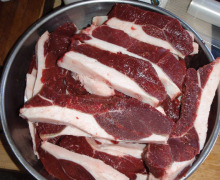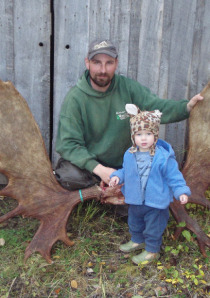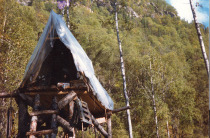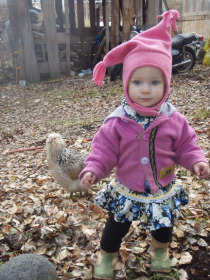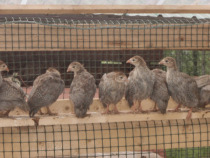Taking lives
 Thursday, November 12, 2009 at 10:10AM
Thursday, November 12, 2009 at 10:10AM To someone who doesn't live this type of lifestyle, it might seem that we witness and instigate alot of animals deaths. Well, to set the record straight, we do. Its an integral part of living close to the land, and a basic responsibility in raising livestock, hunting/fishing/trapping, and providing for your family.
Today will see me harvesting chickens. Last week found Ben guiding successful mountain goat hunters. In August we had to put down our prize milking doe. Spring witnessed me shooting livestock-killing dogs. In winter, Ben traps all manner of fur bearing creatures. And our main source of income comes from a big game guiding business.
This is how we live. We don't go to vets for euthansia, and we don't buy our meat from the grocery store. Dogs that kill stock are not tolerated, even when they have been hand raised and loyal companions. We eat much of what we harvest, supply less privileged members of our community with meat, feed all scraps to our chickens and goats and dogs, and return the rest to the wild- where bears and coyotes and birds quickly clean up the rest.
Its never pleasurable to take a life. Sometimes its a relief, for both the shooter and the fallen. Often its with gratitude, as we thankfully fill our freezers, pantry and bellies with the spoils. And always its with respect, whether killing a bear or a marten, a sled dog or a hen... life and death are not small things.
You might wonder if its difficult. Its not the killing that's the hard part. Gearing up to do the job, is the hardest part mentally. And dealing with the after effects is usually labor intensive and sometimes exhausting. But its an honest way to live.
I suppose that this lifestyle is not for everyone. No, there's no question about it, that in this day and age most folks don't desire this amount of personal responsibility in the natural balance of things. And some have too tender of hearts to be able to follow through on the grittier details.
Heck, when I was 4 years old, I clearly remember my Grampa asking at the dinner table, "How do ya like Jake now?" Jake was a holstein steer that I'd helped raise. It was my first conscious introduction to the concept that we eat dead animals. I immediately became a vegetarian... but it didn't last for long.
My 2 year old is intimately acquainted with the goings-on of farm life. She understands that one moment an animal can be alive, and the next moment its life is over, and usually Mama or Dad or another animal is to blame. She loves checking out the animals who fall victim to our blows. She studies them intricately, tests all their parts, and exclaims over and over how beautiful they are.
I suppose it won't be that long before she is stepping forward to find her own niche in the process of harvesting lifestock and wild game. To see the life fade from an unblinking eye, at your own hands, builds character and an intense attachment to taking good care of that which we have been given. I don't wish her to hurry to that point of taking lives, but to come up to it aware and ready. And she's certainly on the right course.
 [Lisa Rae] |
[Lisa Rae] |  3 Comments |
3 Comments | 




















